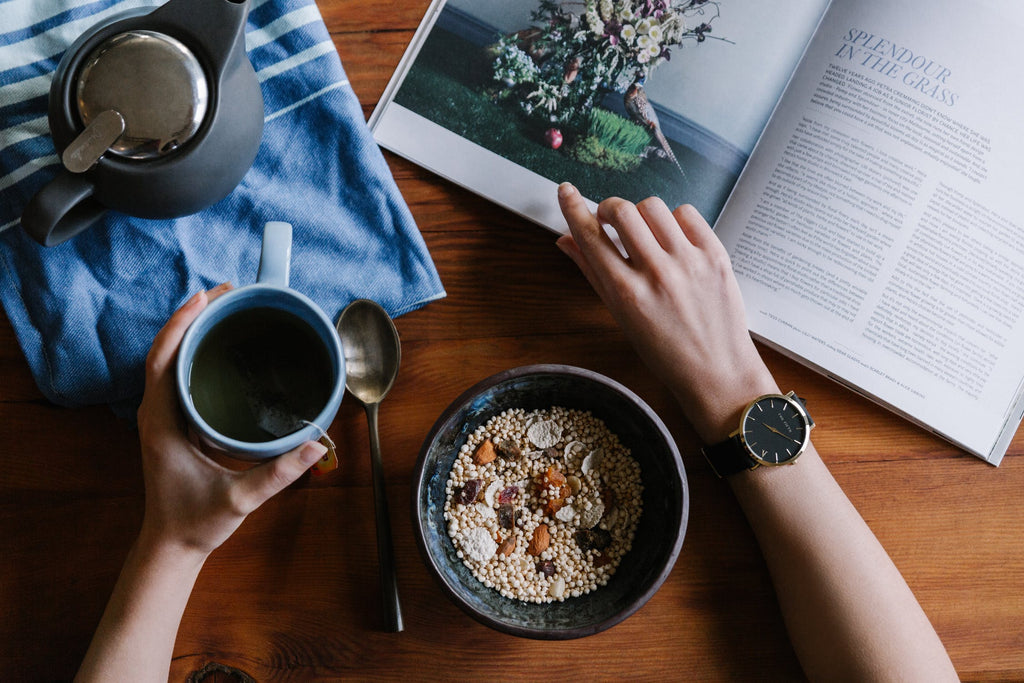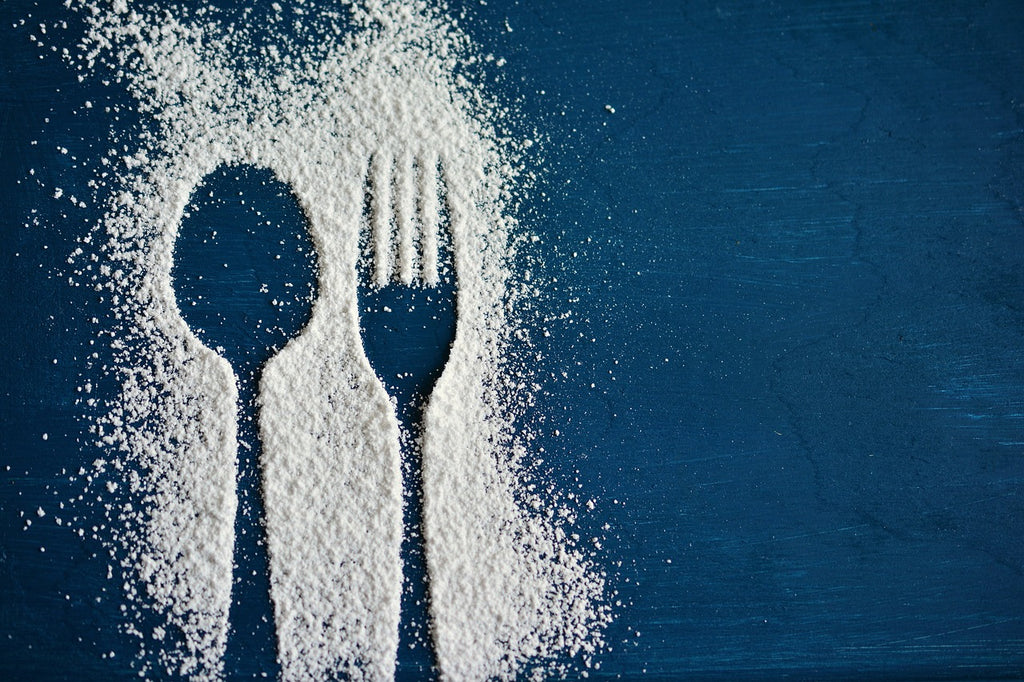
The statistics are in, and it's not so sweet: Type 2 diabetes is fast becoming a leading lifestyle disease for many of us. And it’s not even something that you get with old age, as some of us may believe.
According to the CDC, "More than 30 million Americans have diabetes (about 1 in 10), and 90% to 95% have Type 2 diabetes. This form of diabetes most often develops in people over age 45, but more and more children, teens, and young adults are also developing it."
What Causes Type 2 Diabetes?
Type 2 diabetes is bad news because it can lead to a risk of heart disease, stroke, blindness, kidney disease, and gum infections. Without careful monitoring, it can even lead to amputation.
While genetics can play a role in you being diagnosed with Type 2 diabetes, these three lifestyle choices play a leading role in the onset of Type 2 diabetes:
- Lack of exercise
- Meal plans high in fat and low in fiber
- Being overweight or obese (often caused by the first two factors)
The Link Between Sugar, Diabetes, and Your Favorite Breakfast Cereal

While eating too much sugar does not directly cause Type 2 diabetes, evidence suggests the great overall availability of sugar makes diabetes more common, and its consumption is believed to affect the risk of diabetes.
Consuming too much sugar, especially high-fructose corn syrup — an added sweetener in most of our processed foods — can also cause weight gain, which is one of the leading causes of Type 2 diabetes.
What does this mean for your favorite breakfast option: the ubiquitous, crunchy staple of your childhood, the convenient food that gets you out the door?
Unfortunately, a lot.
Studies have revealed that many of the cereals we grew up with as children contain far too much sugar than is healthy or recommended — sometimes twice or three times as much. (Kellogg's Frosted Flakes, we're looking at you.)
Since sugar is a high-carb food, diabetics know that consuming too much sweet stuff isn't good, as they need to watch their carb intake, which affects their blood sugar levels. But did you know that even if you're non-diabetic, it's still a good idea to keep an eye on your blood sugars?
That's because if you allow your blood glucose levels to go unchecked for a prolonged period of time, you run the risk of experiencing anything from fatigue, nausea, and even headaches. And if you've ever experienced a mid-morning slump or grouchiness, your bowl of sugary cereal is probably to blame.
Is There Cereal for Diabetics?

Now, we're lovers of cereal too, but we're also big fans of healthy breakfasts, so there's no way we're allowing things to remain status quo when it comes to the sugar levels in breakfast cereals. It's why we came up with a sugar-free cereal option. It may sound too good to be true, but it isn't — and it tastes great, if we say so ourselves.
But what makes a breakfast cereal healthy — and diabetic-friendly —other than how much sugar you find in it (or not)? Here are some tips.
Know How Much Sugar You Can Have
The American Heart Association recommends that men should have no more than 36 grams of sugar a day (that's 9 teaspoons), while women should not exceed 25 grams (6 teaspoons) per day.
Check the first ingredient on any cereal box. If sugar, in any of its different iterations, appears at the top of the list, it's probably best if you return the cereal box back to the shelf. If you're really missing the sweetness in your cereal, add low-glycemic fresh fruit such as raspberries or blueberries.
Go for Whole Grains and High Fiber
Whole grain cereals are great for you because they're high in fiber. And high fiber is good for you because it improves blood sugar levels for those with Type 2 diabetes and encourages weight loss. The American Diabetes Association recommends consuming 25 to 30 grams of fiber each day.
Here are some whole grains to include in your cereal:
- Oatmeal, especially rolled oats and steel-cut oats
- Whole wheat flour
- Wheat bran
- Whole cornmeal
- Barley
- Brown rice
- Wild rice
- Buckwheat
- Quinoa
One thing to note about whole grains, however, is they can be high in carbs. So if you're on a diabetes diet or a low-carb diet, you may prefer to go grain-free instead.
Check the Glycemic Index (GI)
Low-GI foods such as quinoa, high-fiber bran cereal, non-starchy vegetables, oatmeal, and most nuts and beans are known to keep your blood sugar levels steady and even help your body metabolize fat more efficiently. It can also keep you feeling full and energized for hours after eating.
Top Your Cereal With Protein and Healthy Fats
Speaking of feeling full and energized, you may want to try topping up your cereal with some high-protein and healthy fats too. That's because protein also plays a crucial role in helping you feel and stay full, encourages you to make better food choices throughout the day, and can reduce your risk of Type 2 diabetes and heart disease.
Healthy fats are healthy, because unlike the fats that a dietitian would frown upon, these fats provide you with extra nutrition and fiber.
Wondering what kind of protein or healthy fats to add to your breakfast cereal? Try these:
- Greek yogurt
- Chia seeds
- Flaxseeds
- Walnuts
Check Your Portion Sizes
We've all had those moments when one serving just isn't enough. The problem with the nutritional labels on most cereal boxes is that the serving sizes are ridiculously small.
So while the amount of sugar per serving makes it seem like you're not consuming a lot of sugar, you're actually not consuming much food if you stick to what the labels recommend. It's no wonder you keep reaching for more.
But if you're serious about watching your blood sugar level, it's time to determine the exact portion of your breakfast cereal. Or, you could choose a cereal that has already been perfectly portioned for you.
The Milk You Use Matters
They're both white and creamy, but believe it or not, their composition is vastly different. Most of us have probably grown up with cow's milk — it's cheap, readily available, and has been part of our lives for almost ever.
Unfortunately, dairy milk has a rather high carbohydrate content, making it not a very good diabetic-friendly option.
If you can, go for unsweetened almond milk instead. High in protein and low in carbs, it's an excellent accompaniment to cereal for diabetics.
The Perfect Cereal for Diabetics
Want in on a secret? If you're looking for a sugar-free, low-carb cereal for diabetics that’s also as tasty as the breakfast cereals you loved as a kid, we've got the solution for you.
Although our cereal contains absolutely no sugar, the magical properties of monk fruit means it's still as sweet as your old-school not-so-healthy favorites. It’s also grain-free (and therefore gluten-free) and has just one measly gram of carb, making it an ideal cereal for diabetics and low-carb lifestylers alike.
Did we mention you can even pour your almond milk straight into a pack and eat it? Now, if that's not one of the best breakfast ideas, we don't know what is.




